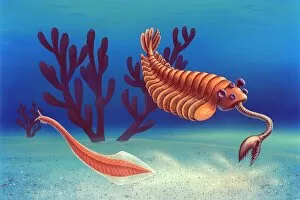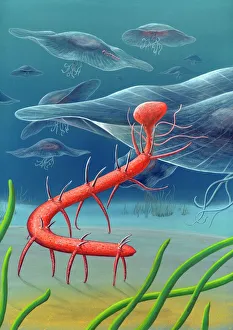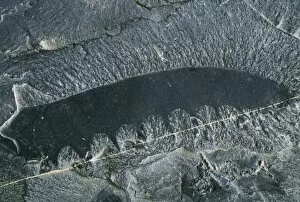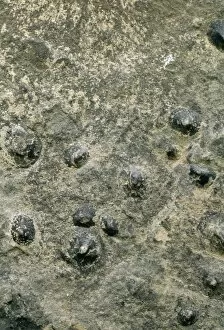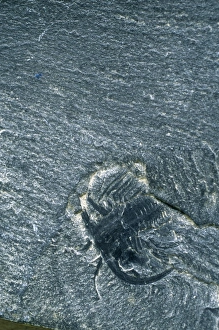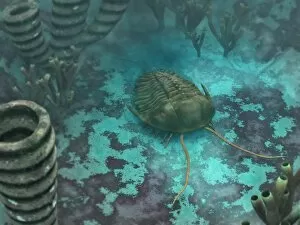Burgess Shale Collection
Discover the mesmerizing world of Burgess Shale, where ancient creatures come to life in stunning detail
All Professionally Made to Order for Quick Shipping
Discover the mesmerizing world of Burgess Shale, where ancient creatures come to life in stunning detail. Step back in time as you gaze upon the Ogygiopsis klotzi fossil, a trilobite measuring an impressive 50mm long with a delicate fault running through it. This remarkable specimen offers a glimpse into the intricate beauty preserved within these rocks. Immerse yourself in the vibrant Cambrian era as you explore breathtaking artwork depicting various Cambrian animals. Marvel at the intricately illustrated Cambrian invertebrates, each one capturing their unique characteristics and allure. Feast your eyes on Hallucigenia sparsa, a velvet worm fossil known for its enigmatic appearance and preserved elegance (C016 / 5258). Witness Anomalocaris canadensis, an arthropod fossil (C016 / 4925), brought to life through meticulous artistry. Transport yourself further into this prehistoric realm with detailed models of Anomalocaris canadensis (C013 / 6531) and Hallucigenia sparsa - both showcasing their otherworldly features that once roamed our planet millions of years ago. Delve deeper into Burgess Shale's rich biodiversity by admiring fossils like Burgessia bella, an astonishing arthropod from times long past. Unearth Hurdia victoria, an ancient fossil that captivates with its intricate structure and undeniable charm. And let us not forget Ottoia prolifica, a priapulid worm whose existence is revealed through fascinating remains found within these hallowed grounds. Burgess Shale beckons adventurers seeking to unravel Earth's history and marvel at its diverse inhabitants from eons gone by. With every discovery made here, we gain invaluable insights into our planet's past while igniting our imagination for what lies ahead. So join us on this extraordinary journey through time as we uncover the wonders hidden within Burgess Shale's ancient embrace.


